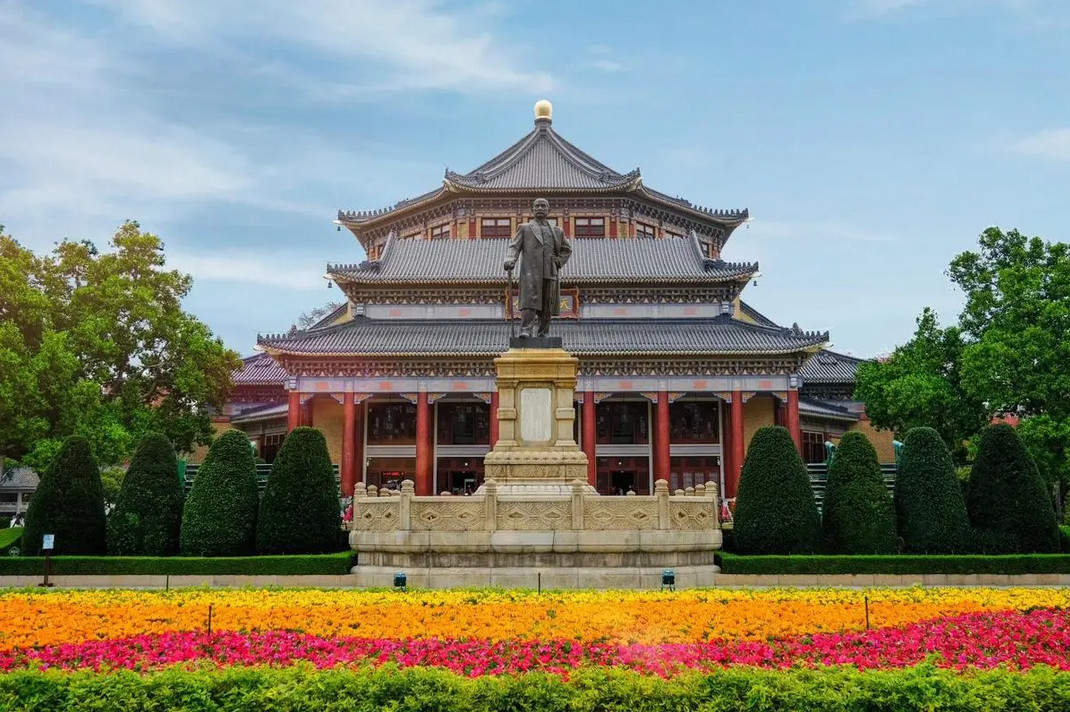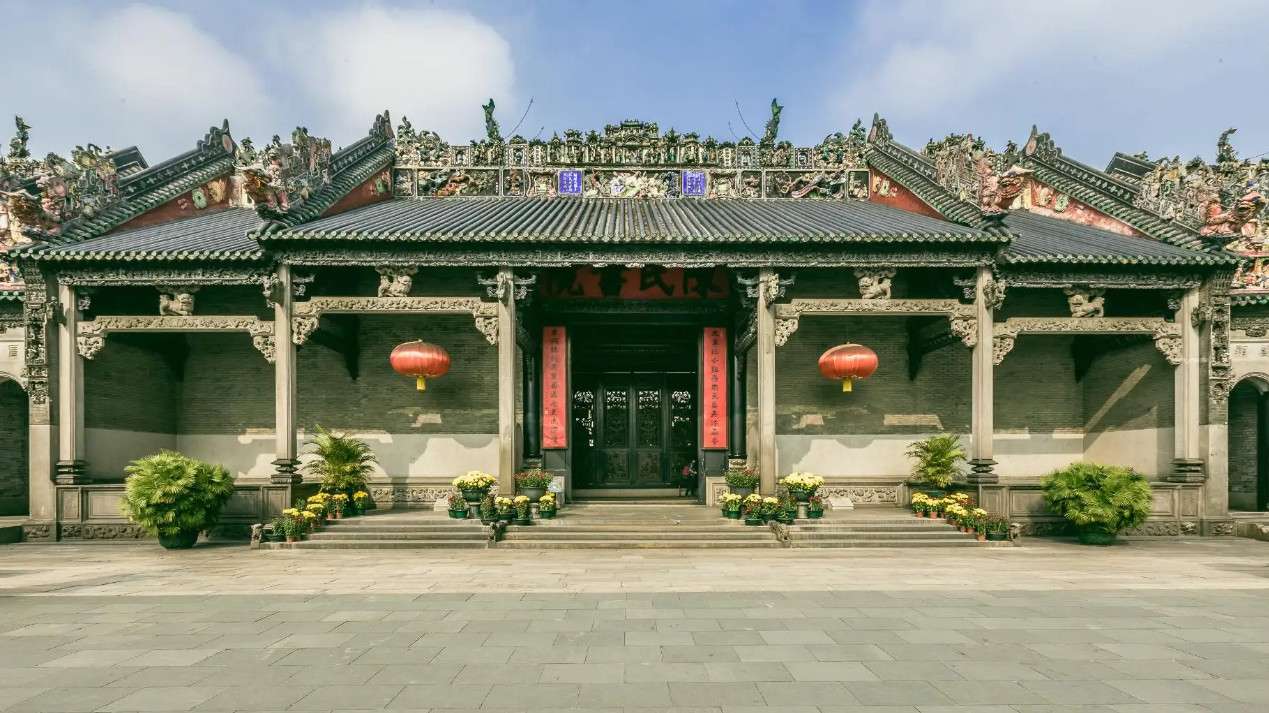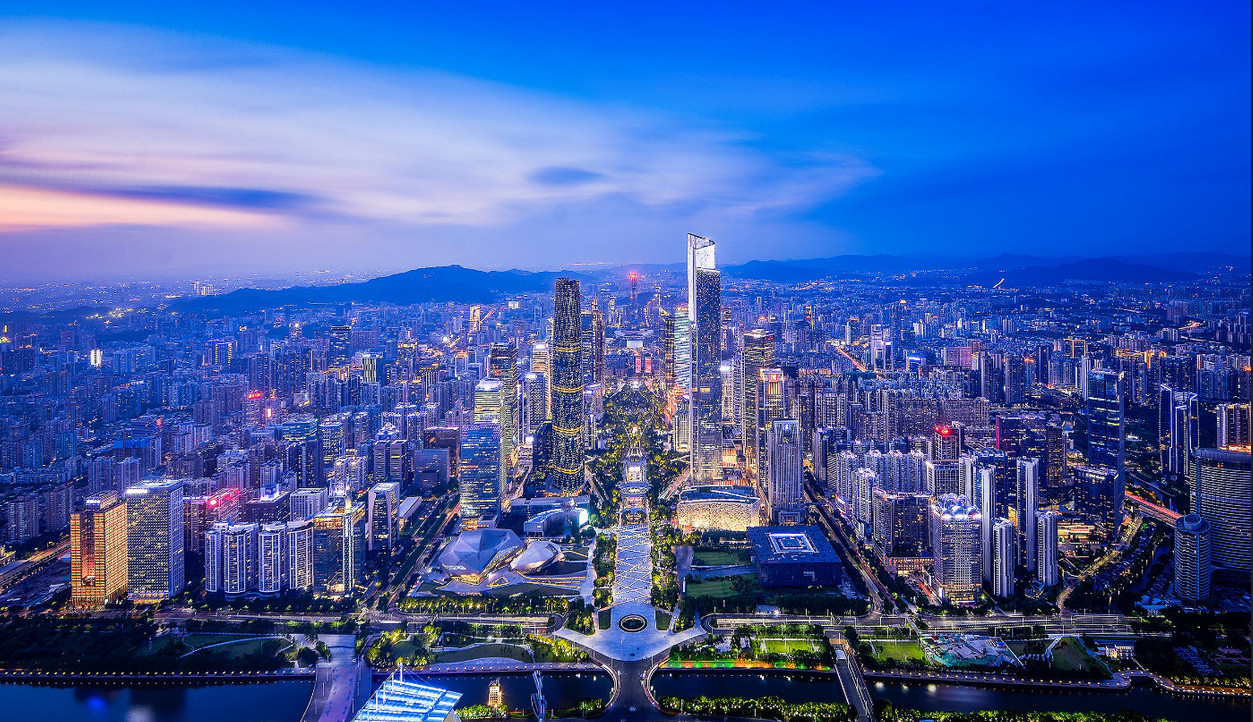Canton Tower
Canton Tower, also known as the “Slim Waist,” is one of Guangzhou’s most iconic landmarks. Standing at 600 meters tall, with the main tower body reaching 450 meters and the antenna mast extending an additional 150 meters, it is the tallest tower in China and the third tallest in the world. Canton Tower is not just a TV tower; it integrates urban sightseeing, high-altitude recreation, fashion dining, wedding conventions, film and television entertainment, environmental science, cultural education, and shopping. The tower’s unique design features a gradually changing mesh structure formed by rotating two elliptical steel shells by 135 degrees, resembling a slender woman, hence the nickname “Slim Waist.” Inside, it houses the world’s highest revolving restaurant and Ferris wheel, offering visitors a 360-degree panoramic view of Guangzhou. The design of Canton Tower not only considers aesthetics but also includes earthquake and wind resistance capabilities, able to withstand an 8.0 magnitude earthquake and a level 12 typhoon, with a design life exceeding 100 years.
Guangzhou Opera House
The Guangzhou Opera House is one of the landmark buildings on Guangzhou’s new central axis, covering a total area of 42,000 square meters and a building area of 73,000 square meters, with a total height of 43.1 meters. Designed by renowned architect Zaha Hadid, the exterior features geometric stone materials in black, white, and gray tones, earning it the nickname “Double Pebbles.” The opera house includes an opera hall, an experimental theater, and a contemporary art museum, making it the most advanced, comprehensive, and largest performing arts center in South China. The Guangzhou Opera House is not only a cultural landmark but has also won multiple international awards, such as the “FIDIC Centennial Major Project Award” and being named one of the “Top Ten Opera Houses in the World” by USA Today. Its unique design and high-quality performances make it an essential part of Guangzhou’s cultural life.
Sun Yat-sen Memorial Hall
The Sun Yat-sen Memorial Hall was built to commemorate Dr. Sun Yat-sen, the founding father of the Republic of China. Located in the heart of Guangzhou, this grand building covers an area of 62,000 square meters. The hall’s design is a blend of traditional Chinese architecture and modern construction techniques, featuring a large octagonal structure with a blue-tiled roof and red pillars. Inside, the main hall can accommodate over 3,000 people and is used for various events, including concerts, conferences, and ceremonies. The memorial hall is surrounded by beautiful gardens and statues of Dr. Sun Yat-sen, making it a popular tourist attraction and a significant cultural and historical site in Guangzhou. The building’s architecture symbolizes the unity and strength of the Chinese people and serves as a reminder of Dr. Sun Yat-sen’s contributions to the country’s modernization and democratic development.

The Sacred Heart Cathedral
The Sacred Heart Cathedral, also known as the Stone House, is a Gothic Revival Roman Catholic cathedral located in the heart of Guangzhou. Built by French missionaries in the late 19th century, it is one of the few cathedrals in the world constructed entirely of granite, including all the walls, pillars, and twin towers. The cathedral covers an area of 2,754 square meters and features stunning stained glass windows, intricate carvings, and a grand altar. The twin towers, each standing at 58.5 meters, house large clocks and bells that chime melodiously. The Sacred Heart Cathedral is not only a place of worship but also a significant architectural and historical landmark in Guangzhou. It attracts thousands of visitors and worshippers each year, who come to admire its beauty and experience its serene atmosphere. The cathedral’s construction reflects the cultural exchange between China and the West during the 19th century and stands as a testament to the enduring legacy of Christian missionaries in China.

Chen Clan Ancestral Hall
The Chen Clan Ancestral Hall, also known as the Chen Clan Academy, is a traditional Chinese academic temple in Guangzhou. Built in the late 19th century during the Qing Dynasty, it served as a place for the Chen family to prepare for imperial examinations and to honor their ancestors. The hall covers an area of 15,000 square meters and consists of 19 buildings connected by corridors, courtyards, and gardens. The architecture is a masterpiece of traditional Chinese design, featuring intricate wood carvings, stone sculptures, and ceramic decorations. The main hall houses ancestral tablets and is used for ceremonies and gatherings. Today, the Chen Clan Ancestral Hall functions as the Guangdong Folk Art Museum, showcasing a wide range of traditional Chinese arts and crafts, including embroidery, pottery, and calligraphy. It is a popular tourist destination and a significant cultural heritage site, offering visitors a glimpse into the rich history and artistic traditions of the region.

Shamian Island
Shamian Island is a historical area in Guangzhou, known for its well-preserved colonial architecture and picturesque scenery. The island covers an area of 0.3 square kilometers and was a concession area for foreign traders during the 19th and early 20th centuries. It features a unique blend of Western and Chinese architectural styles, with many buildings reflecting the neoclassical, Gothic, and baroque influences of the time. Shamian Island is home to several consulates, churches, and former trading houses, as well as lush gardens and tree-lined streets. The island’s peaceful atmosphere and historical significance make it a popular destination for tourists and locals alike. Visitors can explore the various historical buildings, enjoy a leisurely stroll along the waterfront, and learn about the island’s role in Guangzhou’s history as a major trading port. Shamian Island stands as a testament to the city’s rich cultural heritage and its historical connections with the rest of the world.
Zhujiang New Town
Zhujiang New Town is a modern urban development in Guangzhou, located along the banks of the Pearl River. Covering an area of 6.44 square kilometers, it is the city’s new central business district and a symbol of Guangzhou’s rapid modernization and economic growth. The area features a mix of high-rise office buildings, luxury hotels, shopping malls, and cultural venues, including the Guangzhou Opera House and the Guangdong Museum. Zhujiang New Town is also home to several green spaces, such as the Huacheng Square, which is the largest city square in Guangzhou and a popular spot for locals and tourists to relax and enjoy the city’s skyline. The development of Zhujiang New Town has transformed Guangzhou into a global metropolis, attracting businesses, tourists, and residents from around the world. It represents the city’s vision for the future, combining modern architecture, advanced infrastructure, and a high quality of life.

Baiyun Mountain
Baiyun Mountain, also known as White Cloud Mountain, is a famous scenic spot in Guangzhou, covering an area of 28 square kilometers. The mountain is named for the white clouds that often envelop its peaks, creating a picturesque and serene landscape. Baiyun Mountain consists of more than 30 peaks, with the highest being Moxing Ridge, which stands at 382 meters above sea level. The area is a popular destination for hiking, sightseeing, and outdoor activities, offering visitors stunning views of the city and the surrounding countryside. Baiyun Mountain is also home to several historical and cultural sites, including ancient temples, pavilions, and gardens. The mountain’s natural beauty and cultural significance make it a beloved landmark in Guangzhou, attracting millions of visitors each year. It provides a peaceful retreat from the bustling city and a chance to connect with nature and history.
These eight landmarks showcase the rich cultural heritage, historical significance, and modern development of Guangzhou, making it a vibrant and dynamic city.
